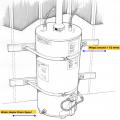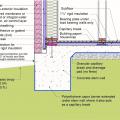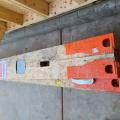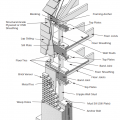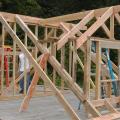Showing results 1 - 9 of 9
A water heater is anchored to 2 x 4 wood blocking that is attached to the wall studs.
An indoor water heater should be secured to the wall’s studs to prevent it from moving or tipping over in the event of an earthquake
Brick veneer framed wall supported by a concrete slab-on-grade foundation with a turn-down footing insulated on its top surface, showing anchorage of the wall to the foundation for seismic resistance
Connecting hardware helps tie the roof to the walls to ensure a continuous load path to improve a building’s resistance to high winds, floods, and earthquakes.
Connecting hardware helps tie the walls to the top plates and rim joists to ensure a continuous load path to improve a building’s resistance to high winds, floods, and earthquakes.
Critical connections for providing a continuous load path in buildings and storm shelters
Right - Engineered portal frames are used for wall bracing to resist wind and earthquake loads.
This wood-framed wall is connected with framing anchors, metal strapping and ties, and anchor bolts to secure the roof to the walls and walls to the foundation
Wrong - Framing a dormer using only toe nailing and end nailing is not acceptable in areas subjected to high winds, hurricanes, or earthquakes.

